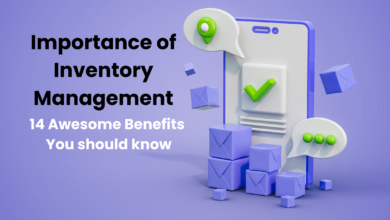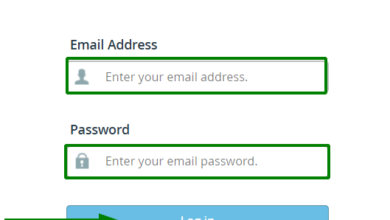The Role of Technology in Optimizing Compliance Reporting Efforts

These days, regulations seem to change every time you blink. Companies in finance, healthcare, manufacturing – you name it – need to stay on top of new rules. Disregarding laws can have a detrimental impact on organizations. Fines and lawsuits cost millions. It damages reputations. Some businesses may even lose licenses and shut down.
Reporting demonstrates that organizations adhere to laws. But traditional reporting was tough. Doing it by hand took forever and mistakes happened a lot. Technology is revolutionizing compliance reporting. It makes the process smoother and improves accuracy. This article explores how modern tools are optimizing compliance reporting.
What Does Compliance Reporting Involve?
First, let’s review what compliance reporting means. It’s the process companies use to show they follow regulations. They gather data and submit reports to agencies overseeing their industry. Compliance reporting promotes transparency and accountability. It helps organizations identify and manage risks.
Finance, healthcare, manufacturing, and other regulated sectors need careful reporting. Activities involved include:
- Collecting data from operations, sales, HR, and other departments
- Organizing and analyzing the data to spot problems
- Creating reports with details to submit to regulators
- Keeping documentation like audit trails and controls
Thorough reporting protects stakeholders and maintains public trust. But traditional methods had many problems.
Challenges With Old-School Reporting
Manual compliance reporting was inefficient and flawed in many ways:
- Data errors: Humans make mistakes when entering figures and details by hand. Typos, transposed numbers, and incorrect data entry often plagued old-school compliance reporting. This results in inaccurate reports that fail to reflect the true state of compliance.
- Information silos: Data stored in disparate legacy systems and paper records made accessing a complete view of compliance impossible. Piecing together a big-picture view from fragmented data was like assembling a jigsaw puzzle while blindfolded.
- Regulation changes: Constant updates to compliance regulations at the federal, state, and industry levels made it extremely difficult to keep manual reporting processes current. Staff scrambled to modify forms, paperwork, and reporting procedures each time a regulation changed.
- Laborious auditing: Digging through mountains of paperwork and archived documents to review reports was a massive undertaking. Audits dragged on for weeks or months just to verify historical compliance records.
- Limited insights: Traditional compliance systems lacked real-time visibility and could not provide actionable insights. With manual processes, issues failed to be detected until after problems arose.
These problems exposed organizations to penalties, legal actions, and damage to their reputation when issues arose. Compliance reporting solutions come into play to tackle these challenges offering precise approaches for managing compliance data. As a result, organizations can now navigate compliance requirements effectively minimizing the risks associated with reporting methods.
Here’s a bar chart that shows the different sources of reporting errors.
How Modern Tools Optimize Reporting
Advanced software, automation, and analytics have transformed compliance reporting. Key improvements include:
Streamlining Data Collection
Automating data gathering reduces errors caused by manual entry. Information flows from operational systems into reporting tools. This enhances accuracy while saving significant time.
Centralizing Information
Modern platforms integrate data from across the business – sales, finance, HR, and more. This breaks down silos providing a complete view of compliance.
Enabling Real-Time Monitoring
The software generates up-to-the-minute insights versus periodic reports. Teams can identify potential issues and respond before problems escalate.
Powering Predictive Analytics
Intelligent algorithms analyze patterns to detect emerging compliance risks. Organizations can deploy preventive measures instead of reacting.
Simplifying Report Creation
Purpose-built tools standardize and automate reporting. At the click of a button, they populate forms with data and submit them to agencies.
Managing Regulatory Changes
Leading solutions reflect new rules and requirements in reporting templates and workflows. This keeps processes aligned with the latest regulations.
Key Benefits of Modernizing Reporting
Transitioning to automated, data-driven compliance reporting delivers transformative benefits across organizations:
Greater Accuracy and Reliability
Humans make mistakes. When staff enter figures or make reports by hand, errors happen. This results in inaccurate and unreliable data that distorts real performance. Automated reporting prevents mistakes. Information goes straight from business systems into reporting tools without human intervention. Reports reflect true compliance status consistently.
Improved Efficiency and Productivity
Old reporting took massive time as staff collected data, analyzed it, and made reports. Automation handles these tedious tasks, freeing up thousands of hours. Teams can now focus on more rewarding strategic work instead of paperwork. Their skills get better used.
Real-Time Visibility
Lagging quarterly reports only provide periodic snapshots. Modern tools give real-time dashboards and alerts. Leaders can check compliance health anytime instead of waiting for old reports. Issues get flagged quickly before growing into bigger problems.
Cost Reduction
Manual processing, mistakes, and delays bloated costs before. Automating streamlines the process, cutting expenses a lot. Organizations save on clerical staff, audits, and productivity losses. Reporting becomes faster, leaner, and more affordable.
Smarter Decision-Making
Instant data and predictive analytics help leaders take proactive steps for compliance risks. Timely insights drive growth by revealing opportunities and challenges early on.
Competitive Advantages
Many organizations view reporting as a checkbox exercise. But sound compliance paves the way for commercial success.
Accurate and timely reporting is crucial for any company. It acts as a shield against fines, lawsuits, and reputation problems. It also strengthens trust and confidence with customers and stakeholders.
Beyond Basic Requirements
In the past, reporting focused on base compliance needs. Modern tools unlock value far beyond just staying audit-ready. Predictive analytics and risk modeling enable strategic reporting.
Implementing New Reporting Technology
Transitioning to new reporting systems involves thoughtful preparation and planning:
- Integration – Moving data from old systems to new reporting tools should be easy. APIs and interfaces may need customization. Planning helps cut disruption.
- Training – Staff will need guidance to adopt new solutions. They leverage added capabilities like analytics. Change management ensures teams have the required skill sets.
- Data Security – Hosting reporting data in the cloud comes with enhanced cyber risks. More security controls, access policies, and encryption safeguard sensitive information.
- Process Redesign – New tools need reimagining processes to maximize value. Compliance workflows should integrate automation and analytics at critical points.
The payoff in efficiency, insights, and risk reduction is well worth the effort.
What’s on the Horizon for Reporting?
Compliance technology will continue advancing in exciting ways:
- Blockchain: Shared ledgers powered by blockchain technology may provide greater data integrity and transparency in compliance reporting. Cryptographic proofs could help verify the accuracy of reported information in the future.
- Artificial intelligence: AI and machine learning will enable even more powerful predictive analytics capabilities for compliance activities. Systems will continuously improve at detecting risks and unusual activity indicating potential compliance issues.
- Cloud platforms: As more businesses adopt cloud-based systems, compliance reporting will benefit from greater accessibility, flexibility, and scalability. Companies can generate reports whenever needed, even when staff is out of the office.
- Enhanced security: With compliance data becoming increasingly digital, security measures like role-based access, multi-factor authentication, and data encryption will grow in importance. Protecting sensitive information will be critical as reporting relies more on tech.
Final Thoughts
Modern compliance reporting tools represent a real game changer for regulated organizations. Automation, analytics, and integration make reporting faster, more accurate, and more proactive. Technology helps businesses better navigate evolving regulations and avoid damaging failures.
Leveraging reporting solutions can transform compliance from a risky task into a strategic advantage. When combined with technology compliance programs become assets that foster trust, among customers and authorities while also building a reputation for integrity that attracts top talent.
As advancements in AI and blockchain continue to enhance compliance reporting solutions their importance in business operations will only grow. Organizations that adopt these technologies today will gain a competitive edge for years to come. They will be well prepared to seize changes as opportunities, rather than struggling with outdated tools.
Frequently Asked Questions
- How does technology improve compliance reporting accuracy?
Automated systems grab data straight from the source without any manual handling. This prevents human errors that lead to bad reporting. The machines just crunch the numbers accurately every time.
- What are some key benefits of automating compliance reporting?
Automation handles the dull manual tasks so people can focus on more important things. Costs also drop since you need fewer clerical workers and auditing. And the real-time dashboards give you instant insights into compliance health, instead of waiting for quarterly reports.
- What challenges come with implementing new compliance reporting technology?
Integrating new systems with old ones takes work. Employees will need training and hand-holding to use the tools right. You’ll want to upgrade cybersecurity with the increased risk. Processes will likely need redesigning to fully leverage the new capabilities. However, with proper preparation, the transition can proceed smoothly.



